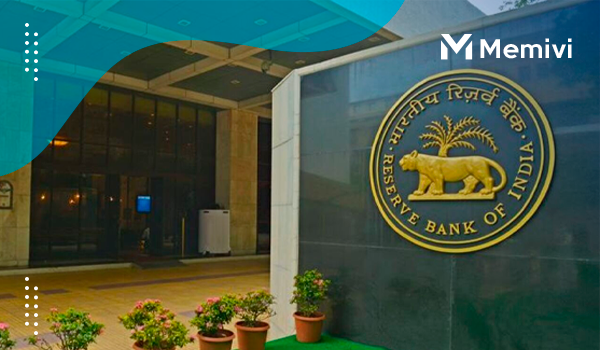
As the Indian economy continues to grow and develop, it faces a constant struggle to balance growth with inflation. This is where the Reserve Bank of India (RBI) plays a crucial role. Recently, the RBI announced a pause on rate hikes, signaling a shift in its priorities towards increasing growth.
This decision is not only important for India’s economy but also for its citizens who rely on job growth and stability. In this blog post, we will take a closer look at the RBI’s decision to pause on rate hikes, what it means for India’s economy, and how it impacts inflation. We will also explore the challenges that the RBI faces in balancing growth with inflation, and what this means for the future of India’s economy.
Introduction to RBI’s decision and its significance
The Reserve Bank of India (RBI) recently made a significant decision by pausing on rate hikes, opting to balance growth and inflation in the country. This move has garnered attention from economists, investors, and businesses alike, as it has the potential to impact various sectors and the overall economic landscape.
The RBI’s decision to pause on rate hikes indicates a cautious approach towards managing the delicate balance between promoting economic growth and controlling inflation.
By keeping interest rates unchanged, the central bank aims to provide stability and support to businesses and consumers, fostering an environment conducive to investment and spending. This decision holds immense significance for several reasons.
Firstly, it reflects the RBI’s assessment of the current economic situation, taking into account various indicators such as GDP growth, inflation levels, and global economic trends. It signals the central bank’s confidence in the existing monetary policy framework and its ability to manage the country’s economic trajectory effectively.
Furthermore, the RBI’s decision to pause on rate hikes can have a direct impact on borrowing costs for businesses and individuals. It can influence lending rates, affecting investments, consumption, and overall economic activity. By maintaining accommodative monetary policy, the central bank aims to stimulate credit flow and encourage borrowing, ultimately boosting economic growth.
Understanding the role of RBI in balancing growth and inflation
The Reserve Bank of India (RBI) plays a crucial role in balancing growth and inflation within the country’s economy.
As the central banking institution, the RBI is responsible for formulating and implementing monetary policies that aim to maintain price stability and support sustainable economic growth. In order to understand the role of the RBI in this balancing act, it is important to first grasp the relationship between growth and inflation.
Economic growth refers to the increase in the production of goods and services in an economy, while inflation refers to the persistent rise in the general price level of goods and services over time.
The RBI’s primary objective is to maintain price stability, which means keeping inflation within a target range that is conducive to sustainable economic growth. If inflation is too high, it erodes the purchasing power of consumers and businesses, leading to reduced economic activity.
On the other hand, if inflation is too low, it can hinder investment and spending, potentially leading to stagnation in the economy. To achieve this delicate balance, the RBI uses various monetary policy tools, such as adjusting interest rates, reserve requirements, and open market operations.
When inflationary pressures are high, the RBI may raise interest rates to curb spending and reduce the demand for goods and services. Conversely, during periods of economic slowdown or low inflation, the RBI may lower interest rates to stimulate borrowing and spending, thereby boosting economic growth.
In recent times, the RBI’s decision to pause on rate hikes reflects the need to balance the objective of supporting economic growth while keeping inflationary pressures in check. This approach acknowledges the challenges posed by the COVID-19 pandemic and its impact on the Indian economy.
The response of the market and industry to RBI’s decision
Following the announcement of the Reserve Bank of India’s decision to pause on rate hikes, the market and industry responded with a mixture of relief and cautious optimism. The central bank’s move to maintain the status quo on interest rates was seen as a balancing act between promoting economic growth and keeping inflation in check.
In the immediate aftermath of the announcement, the stock market witnessed a positive reaction, with key indices registering gains. This indicated that investors viewed the decision as a positive signal for businesses and the overall economy.
The pause on rate hikes is expected to provide a much-needed boost to sectors such as real estate, manufacturing, and consumer goods, which heavily rely on affordable credit for expansion and investment. Industry experts and stakeholders welcomed the RBI’s decision, emphasizing the need to prioritize economic recovery and stimulate demand.
With the ongoing COVID-19 pandemic and its impact on businesses and livelihoods, the pause on rate hikes is seen as a timely measure to support the economy’s recovery trajectory.
However, there are also concerns about the potential impact on inflation and the stability of the financial system. Some economists argue that the pause on rate hikes may lead to a rise in inflationary pressures, especially considering the recent increase in global commodity prices. Balancing growth and inflation remains a delicate task for the RBI, and close monitoring of economic indicators will be crucial to ensure price stability and sustainable growth.
The way forward: RBI’s future strategies and implications for businesses and individuals

The Reserve Bank of India’s decision to pause on rate hikes has significant implications for both businesses and individuals.
As the central bank strives to strike a delicate balance between promoting economic growth and managing inflationary pressures, it is crucial to understand the future strategies that the RBI may adopt.
One potential strategy is maintaining an accommodative monetary policy stance. By keeping interest rates low, the RBI aims to stimulate borrowing and consumption, thereby boosting economic activity. This approach can be beneficial for businesses as it lowers the cost of borrowing, allowing them to invest in expansion, research and development, and hiring new talent.
For individuals, a low-interest rate environment can create favorable conditions for loans, mortgages, and other forms of credit. This can enable individuals to make significant purchases such as homes or vehicles, or even start their own businesses. A
dditionally, it can provide relief to existing borrowers by reducing the burden of interest payments. However, businesses and individuals should also be mindful of the potential implications of an accommodative monetary policy.
A prolonged period of low-interest rates can lead to increased inflationary pressures, which may erode the purchasing power of consumers and impact the profitability of businesses. In such a scenario, the RBI may need to reassess its stance and consider tightening monetary policy by raising interest rates to curb inflation.
Another future strategy that the RBI may adopt is a cautious approach, closely monitoring key economic indicators and adjusting policies accordingly. This would involve carefully assessing the evolving growth and inflation dynamics to ensure that the economy remains stable and inflation remains within the target range.
Conclusion
In conclusion, the RBI’s decision to pause on rate hikes is a delicate balancing act between promoting economic growth while also keeping inflation in check.
By adopting a cautious approach, the central bank aims to support businesses and consumers alike by maintaining accommodative monetary policy. The challenge lies in closely monitoring inflationary pressures and adapting policy measures accordingly.
With this prudent move, the RBI demonstrates its commitment to maintaining a stable and sustainable economic environment. As we navigate the complexities of the global economy, we can trust that the RBI will continue to prioritize the well-being of the nation’s economy and strive to strike the right balance between growth and inflation.


 Why Investors Should Approach a Strong Economy with Caution? <p class='sec-title' style='line-height: normal; font-weight: normal;font-size: 16px !important; text-align: left;margin-top: 8px;margin-bottom: 0px !important;'> In the world of investing, a strong economy is often viewed as a signal to buy and invest heavily. However, this approach can sometimes be a mistake. </p>
Why Investors Should Approach a Strong Economy with Caution? <p class='sec-title' style='line-height: normal; font-weight: normal;font-size: 16px !important; text-align: left;margin-top: 8px;margin-bottom: 0px !important;'> In the world of investing, a strong economy is often viewed as a signal to buy and invest heavily. However, this approach can sometimes be a mistake. </p>  The Future is Now: A Guide on How to Invest in AI <p class='sec-title' style='line-height: normal; font-weight: normal;font-size: 16px !important; text-align: left;margin-top: 8px;margin-bottom: 0px !important;'> Your Trusted Source for AI Investment Guidance: Let's Navigate the Future Together. Explore AI Opportunities Today </p>
The Future is Now: A Guide on How to Invest in AI <p class='sec-title' style='line-height: normal; font-weight: normal;font-size: 16px !important; text-align: left;margin-top: 8px;margin-bottom: 0px !important;'> Your Trusted Source for AI Investment Guidance: Let's Navigate the Future Together. Explore AI Opportunities Today </p>  8 Best Alternatives to Fixed Deposits in India <p class='sec-title' style='line-height: normal; font-weight: normal;font-size: 16px !important; text-align: left;margin-top: 8px;margin-bottom: 0px !important;'> Say goodbye to traditional fixed deposits! Explore the 8 best alternatives in India to grow your savings and investments. </p>
8 Best Alternatives to Fixed Deposits in India <p class='sec-title' style='line-height: normal; font-weight: normal;font-size: 16px !important; text-align: left;margin-top: 8px;margin-bottom: 0px !important;'> Say goodbye to traditional fixed deposits! Explore the 8 best alternatives in India to grow your savings and investments. </p>